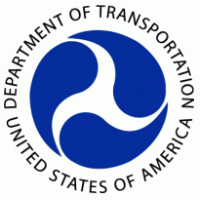- IATA Lithium Battery Guidance Document for Edition 64 is now available – here. This 2023 guidance document includes updated and additional FAQs for shippers to learn how to comply with the 64th (2023) Edition of the IATA Dangerous Goods Regulations (DGR) on definitions, classifications, exceptions, and prohibitions.
- ADN 2023 (European Agreement concerning the International Carriage of Dangerous Goods by Inland Waterways) available online
- Incorporation by Reference; North American Standard Out-of-Service Criteria; Hazardous Materials Safety Permits. SUMMARY: FMCSA amends its Hazardous Materials Safety Permits regulations to incorporate by reference the April 1, 2022, edition of the Commercial Vehicle Safety Alliance’s (CVSA) handbook (the handbook) containing inspection procedures and Out-of-Service Criteria (OOSC) for the inspection of commercial motor vehicles used in the transportation of transuranic waste and highway route-controlled quantities of radioactive material. The OOSC provide enforcement personnel nationwide, including FMCSA’s State partners, with uniform enforcement tolerances for these inspections. Through this rule, FMCSA incorporates by reference the April 1, 2022, edition of the handbook. DATES: Effective January 23, 2023.California Proposes ELD Requirement for Intrastate Carriers. The California Highway Patrol has proposed a new requirement for Electronic Logging Devices for intrastate motor carriers and their drivers. Interstate carriers and drivers operating in California have been required to use ELDs to record their records of duty status since December 2017.
The notice provides that current state regulations do not require an ELD as the method for preparing an intrastate driver’s record of duty status and are subsequently not compatible with federal regulations. In order for the CHP to fulfill its statutory mandate to be in compliance with federal law, and thus remain eligible for federal funding under the Motor Carrier Safety Assistance Program, the CHP must amend intrastate RODS regulations. This rulemaking will align state regulations with federal regulations in 49 CFR Part 395 by requiring California intrastate carriers and drivers to record RODS using ELDs.
There is one significant difference between the CHP proposal and the federal ELD requirements, however. The Federal Motor Carrier Safety Regulations allow an exception to the ELD requirements for short-haul operations. The short-haul driver exception in 49 C.F.R. § 395.1(e)(1) applies to drivers of vehicles requiring a Commercial Driver’s License, and the exception in 49 C.F.R. § 395.1(e)(2) applies to drivers of property-carrying commercial motor vehicles not requiring a CDL.
To be eligible for the federal ELD short-haul exception, the driver must operate within a 150 air-mile radius of the normal work-reporting location and return to that location and be released from duty within 14 hours.
But the California proposal is more limited. To be eligible for a short-haul exception from the ELD requirements in the CHP proposal, the driver must operate within a 100 air-mile radius of origin and return to the work-reporting location and be released from duty within 12 hours.
- ADR 2023 (Agreement concerning the International Carriage of Dangerous Goods by Road) available onlineADR Competent authorities: Notification in accordance with 1.8.4 (other competent authorities) – Belgium (update)
Proposals of corrections to the French text of ADR as amended: see Depositary notification C.N.433.2022.TREATIES-XI.B.14
- Federal Register Volume 87, Number 247 (Tuesday, December 27, 2022)[Rules and Regulations]
[Pages 79752-79785]
DEPARTMENT OF TRANSPORTATION
Pipeline and Hazardous Materials Safety Administration
49 CFR Parts 107, 110, 171, 172, 173, 174, 175, 176, 177, 178, and 180
[Docket No. PHMSA-2021-0091 (HM-260B)]}RIN 2137-AF56
Hazardous Materials: Editorial Corrections and Clarifications
AGENCY: Pipeline and Hazardous Materials Safety Administration (PHMSA), Department of Transportation (DOT).
ACTION: Final rule.
SUMMARY: This final rule corrects editorial errors and improves the clarity of certain provisions in PHMSA’s program and procedural regulations and in the Hazardous Materials Regulations. The intended effect of this rulemaking is to enhance accuracy and reduce misunderstandings of the regulations. The amendments contained in this final rule are non-substantive changes and do not impose new requirements.
DATES: This final rule is effective January 26, 2023.
- Federal Register Volume 87, Number 244 (Wednesday, December 21, 2022)[Rules and Regulations]
[Pages 77995-78011]
DEPARTMENT OF TRANSPORTATION
Pipeline and Hazardous Materials Safety Administration
49 CFR Parts 107, 171, and 173
[Docket No. PHMSA-2016-0014 (HM-224I)]RIN 2137-AF20
Hazardous Materials: Enhanced Safety Provisions for Lithium Batteries Transported by Aircraft (FAA Reauthorization Act of 2018)
AGENCY: Pipeline and Hazardous Materials Safety Administration (PHMSA), Department of Transportation (DOT).
ACTION: Final rule.
SUMMARY: This final rule revises the Hazardous Materials Regulations for lithium cells and batteries transported by aircraft and is consistent with the previously published Interim Final Rule, which responded to congressional mandates; prohibited the transport of lithium ion cells and batteries as cargo on passenger aircraft; required lithium ion cells and batteries to be shipped at not more than a 30 percent state of charge aboard cargo-only aircraft when not packed with or contained in equipment; and limited the use of alternative provisions for smaller lithium cell or battery shipments to one package per consignment. In response to comments, this final rule provides editorial amendments and modification of certain provisions including marking requirements, requests for an extension on the compliance date, and exception for lithium cells or batteries used for medical devices with approval by the Associate Administrator.
DATES: This final rule is effective on January 20, 2023.



